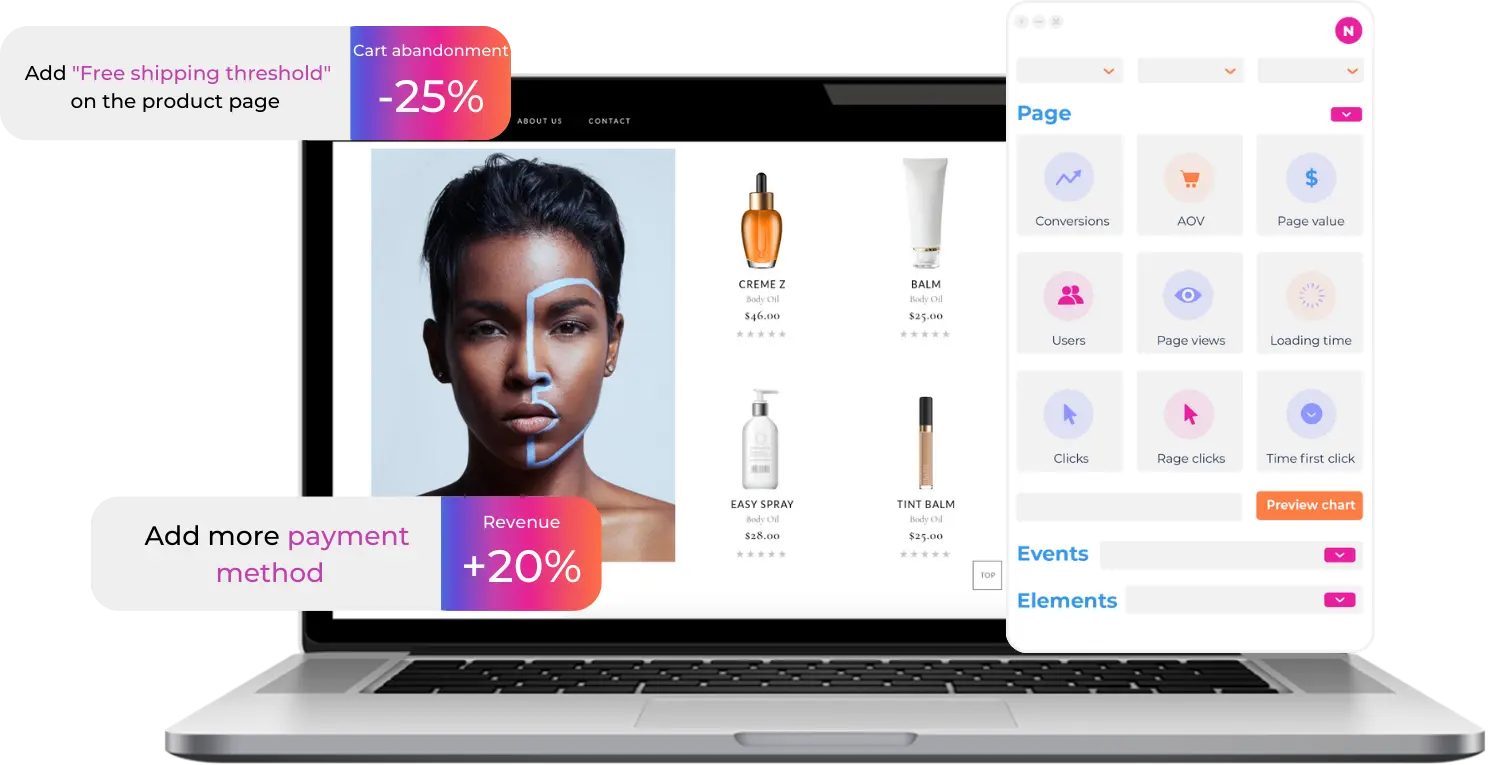Leverage CRO for Stability in Unpredictable Times
Retail and eCommerce merchants are being squeezed between shifting customer demands and supply chain headaches. One way to steady the ship is to leverage CRO tools to make sure your online experience is top-notch.
Today’s global scene is flush with uncertainty, to say the least. The ongoing Russian invasion of Ukraine. Economic uncertainties in the U.S. and abroad. Escalating global warming. Deep divisions in U.S. politics and society. A lingering pandemic. There seems to be no shortage of global turmoil, anxiety and instability.
According to a recent American Psychological Association report, current world events are pushing public stress to alarming levels. The three top stressors for Americans are rising prices due to inflation, supply chain issues and Russia’s invasion of Ukraine. In fact, the APA survey rates inflation and Ukraine as the biggest stressors in the poll’s 15-year history. Additionally, the poll found that stress about money issues is at its highest recorded level since 2015.
How Have Current Events Affected DTC eCommerce?
These global stressors have significantly impacted the DTC eCommerce industry. Whereas eCommerce flourished during the pandemic, the industry now faces post-pandemic concerns that threaten growth and revenue. Here’s a brief look at how some of today’s global challenges affect the eCommerce industry.
The War in Ukraine
The Ukrainian conflict has raised logistical and moral questions for eCommerce retailers. Many major companies have suspended operations and shut down their eCommerce sites in Russia. In the meantime, world government sanctions have sent the Russian economy into freefall. These events present a serious challenge to eCommerce brands, many of whom have lucrative business ties to Russia.
Russia has one of the world’s fastest-growing eCommerce markets, with 81% of the population making an online purchase at least once a month. The Russian eCommerce market was worth US $30 billion in 2021 and is estimated to reach US $28.2 billion by 2024. Russia is the world’s 9th largest eCommerce market.
Inflation
 Rising inflation rates have hit the eCommerce industry hard. The annual inflation rate in the United States has increased from 3.2% in 2011 to 8.5% in March of 2022, the highest since 1981. As a result, the purchasing power of the U.S. dollar has weakened considerably.
Rising inflation rates have hit the eCommerce industry hard. The annual inflation rate in the United States has increased from 3.2% in 2011 to 8.5% in March of 2022, the highest since 1981. As a result, the purchasing power of the U.S. dollar has weakened considerably.
Rising prices are predictably leading to changes in consumer spending habits. Reports show that 80% of consumers expect to change their shopping habits if inflation continues. Consumers will likely cut back on spending, buy in bulk and forgo high-priced purchases and luxury items. Unfortunately, inflation causes more inflation, creating a challenge for eCommerce brands that is not going away any time soon.
Supply Chain Issues
Supply chain breakdowns that started during the pandemic have not abated and, in many ways, have gotten worse. Manufacturing products overseas, transporting them to the United States and shipping them to customers is as challenging now as in 2020. The rising costs of raw materials, inflated international transportation costs, factory shutdowns and port congestion are exasperating the problem.
Rising prices due to supply chain shortages will change customer spending habits in the same way as inflation. As prices rise, customers will spend less and be more choosy in what they buy. Additionally, a shortage of goods and challenges in shipping them in a timely manner could erode consumer confidence in DTC brands.
The good news for the DTC eCommerce industry is that supply chain issues can’t get much worse. The bad news is that they will continue into the foreseeable future. Experts predict that the supply chain crises could linger well into 2022 and 2023.
Supply Chain Issues
Supply chain breakdowns that started during the pandemic have not abated and, in many ways, have gotten worse. Manufacturing products overseas, transporting them to the United States and shipping them to customers is as challenging now as in 2020. The rising costs of raw materials, inflated international transportation costs, factory shutdowns and port congestion are exasperating the problem.
Rising prices due to supply chain shortages will change customer spending habits in the same way as inflation. As prices rise, customers will spend less and be more choosy in what they buy. Additionally, a shortage of goods and challenges in shipping them in a timely manner could erode consumer confidence in DTC brands.
The good news for the DTC eCommerce industry is that supply chain issues can’t get much worse. The bad news is that they will continue into the foreseeable future. Experts predict that the supply chain crises could linger well into 2022 and 2023.
How Do DTC eCommerce Brands Work Through Global Issues?
 eCommerce brands can not control many global challenges that affect their growth, revenue and financial planning. But the one thing they can control is giving customers viable reasons to shop with them and remain loyal. In today’s unpredictable business climate, every single customer is important. So winning new customers and holding on to existing customers need to be at the heart of every business strategy.
eCommerce brands can not control many global challenges that affect their growth, revenue and financial planning. But the one thing they can control is giving customers viable reasons to shop with them and remain loyal. In today’s unpredictable business climate, every single customer is important. So winning new customers and holding on to existing customers need to be at the heart of every business strategy.
The best way to ensure customer loyalty and retention is to give the customers pleasurable and enticing online experiences. Happy customers will buy more and remain loyal to brands they like, which will boost those all-important conversion rates. And the straight path to customer retention is investing in website conversion rate optimization and user experience practices.
What Is Conversion Rate Optimization (CRO)?
Getting more out of existing traffic and leads can help online companies achieve long-term, sustainable growth. That’s where conversion rate optimization (CRO) comes in. Essentially, CRO is the process of increasing conversions on a website or mobile app. CRO works with website traffic to make it more valuable, meaningful and effective. It involves making website improvements designed for maximum optimization and user enjoyment. These improvements are largely based on user behavior uncovered by UX analysis.
CRO aims to enhance the completion of the customer journey on a website or app. Its goal is to help improve the probability of users taking desired actions, thereby increasing conversions. Successful CRO practices result in highly-qualified leads, increased website traffic and boosts in revenue and customer retention.
What Is User Experience (UX)?
User experience (UX) revolves around how a person feels when interacting with a website or app. It’s about ease of use, visual appeal and how enjoyable a site is to navigate. In short, UX optimization is all about making users’ interaction with a website or app as engaging as possible. UX focuses on converting and retaining customers through pleasurable online experiences.
UX analysis is the process of collecting and evaluating data about how users are experiencing and interacting with a website or app. Brands can use this data to help enhance the user experience through CRO. Successful UX analysis will result in an actionable list of website enhancements that measurably improve the user experience.
How CRO and UX Work Together
Both UX and CRO take similar approaches in analyzing visitors’ behavior and employing usability testing to solve problems. CRO determines what is happening on the website while UX tries to understand why. Both work to deepen a brand’s understanding of its target audience through analysis, testing and making appropriate website changes. Essentially, CRO and UX join forces to determine where website improvements can be made and then produce solutions for these improvements.
Investing in CRO and UX Can Pay Off
Investing in CRO and UX practices can help DTC businesses work through global challenges and add to overall growth and revenue. The statistics speak for themselves. Customers who get great eCommerce experiences are likely to buy more, be more loyal and share their experiences with friends. 96% of global consumers say customer experience is an essential factor in brand loyalty. In fact, just a 5% increase in customer retention can lead to a 25% to 95% increase in profit. Every $1 invested in UX results in a return of $100.
Additionally, the data gathered from UX analysis can help online brands deliver better personalization and highly-targeted marketing campaigns. Improved CRO practices, particularly on the checkout page, can prevent revenue killers like cart abandonment.
The Bottom Line
Today’s eCommerce leaders must think about how global challenges impact their companies and what they can do to minimize negative impacts. Ultimately, focusing on UX and CRO can help brands get through challenging times and economic upheavals. According to McKinsey, brands that invest in customer experience see returns three times higher than those that don’t.
Patience and sticking to solid business plans are also vital to surviving tough times. But to ensure long-term growth and success, investing in the customer experience will help DTC eCommerce brands survive and thrive.
Air360 takes the guesswork out of UX and customer conversions. Air360 is a smart, intuitive, connected experience analytics solution that helps you make data-driven decisions to improve eCommerce conversion. Talk to one of our eCommerce experts or schedule a demo today to learn how you can become a conversion rate hero.
